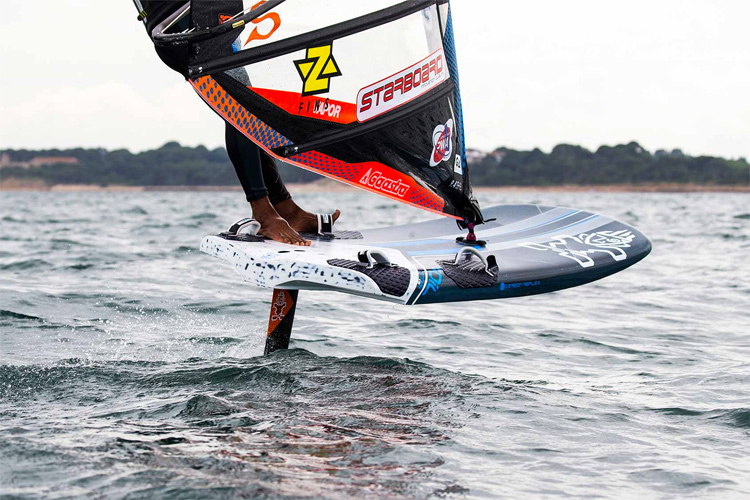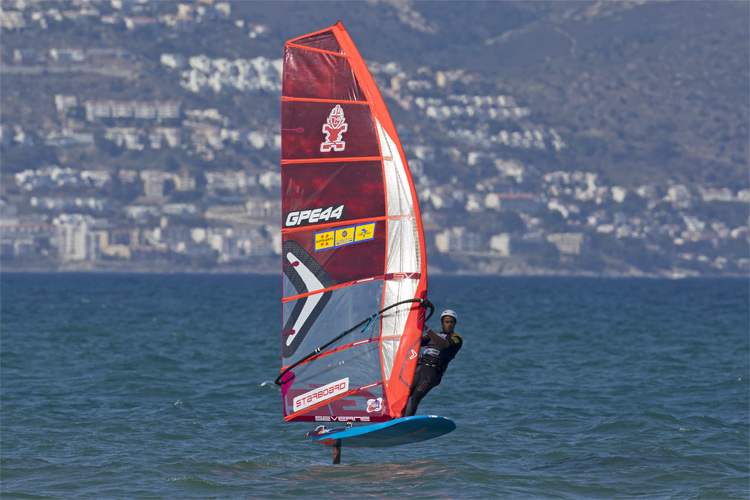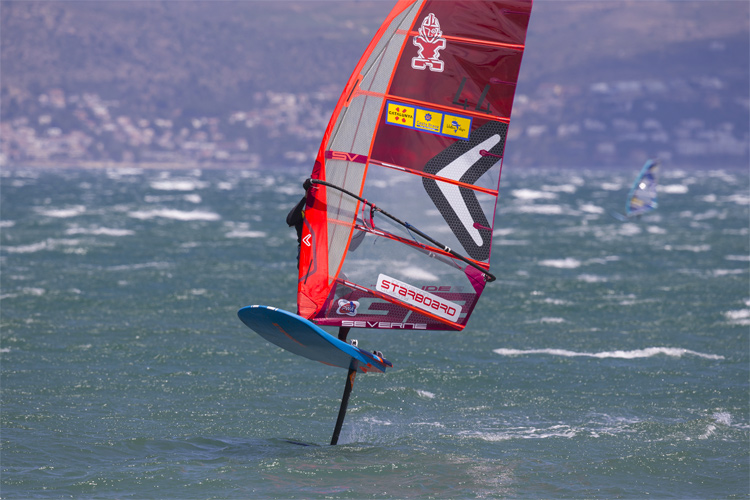The iQFoil has been selected as the official windsurfing equipment for the 2024 Olympic Games and beyond.
The new one-design equipment presented by Starboard is a light, compact, and highly competitive foiling option developed for men weighing between 65 and 85 kilograms, and for women weighing between 55 to 70 kilograms.
Most of the iQFoil components are the same for both male and female athletes, except for the rig size - sail and mast.
The whole kit fits in two bags.
iQFoil will start as a division of the International Formula Windsurfing Class (IFWC). Licensed third-party brands may distribute equipment under their own branding after achieving production standards.
However, in the future, it will evolve into a multi-manufacturer one-design class.
Regatta equipment inspection is a simple process: every board, sail, foil, and mast has an iQFoil barcode and serial number.
Every piece of equipment that leaves the factory has a QC certificate of class legal compliance.
At events, the equipment is inspected and stickered/stamped in the same way as the current RS:X class is at events.
It's the sailors' responsibility to ensure regatta registration is complete with board serial numbers recorded and that the equipment is unchanged from factory delivery.
Eventually, a regatta app will be developed whereby a scan of each of the barcodes registers the competitors' equipment against their profiles.
Obviously, these details will need to be registered manually in the initial stages. A regatta measurer will be on-site to spot-check equipment for any modifications or changes during an event.
The Equipment
At an event, a sailor will register one board, one foil, one fin, one boom, one mast, and one sail (women - 8 m2; men - 9 m2).
The complete foil package features one foil mast, two fuselages, and one front and rear wings.
The two fuselage lengths are used to accommodate a broader range of physiques in a wider range of wind and sea state conditions.
The option to replace the foil with a fin offers an alternative for extreme sailing conditions.
The package price is €6,829 for the men's kit, €6,729 for the women's kit, and €4,259 for the youth.

The Competitive Format
The racing format consists of five different sub-formats: course racing, marathon, point-to-point, sprint slalom, and GPS Speed.
The classic course racing sub-format features the current trapezoid or windward/leeward racing format.
iQFoil races have a target time of 15 minutes to enable a higher number of races to be completed per day, up to a maximum of five.
Marathon races are long races that can take up to three hours.
The race starts at a given location, makes its way around geographical features, and out to particular well-known landmarks - the Statue of Liberty in New York or Chateau D'If, in Marseilles - before returning to the original starting point.
The point-to-point sub-format consists of two separate medium-length races of about 30 to 50 minutes each.
There's an upwind race, out to a finish line some distance away, a rest period, and then the downwind return (or vice versa). The races will be scored separately.
The sprint slalom races are short slalom-style races - around three minutes - with between one and three jibes.
The GPS speed sub-format incorporates technology used in sailing every day - GPS devices.
During a half-hour window, windsurfers have as many opportunities as they wish to attempt to record the fastest time over 500 meters.
The Wind Ranges
The complete iQFoil racing package has been designed to deliver racing in winds from 5 to 35 knots.
The format takes into account weather conditions, sailors' abilities, and body weight.
- Course Racing: 10 Races Per Day | 7-30 knots | 12-14 minutes;
- Slalom Sprint: 5 Races Per Day | 5-10 knots | 3-4 minutes;
- Marathon: 1 Race Per Day | 7-20 knots | 2-3 hours | 2- 3 hours;
- Point-to-Point: 2 Races Per Day | 6- 20 knots | 30 - 40 minutes;
- GPS Speed: 2 Races Per Day | 5 - 30 knots | 2-hour window;

Pros and Cons: The Sailors' Perspective
Here's what the windsurfers who tested the iQFoil have to say about the new Olympic sailboarding equipment:
Advantages
- In line with windsurfing trends, it appeals to the broader windsurfing community;
- One Design recognized benefits in equalization of equipment, limited equipment items required, and focus on athlete competition among foiling options;
- Suitable design and equipment sizes all around;
- Design is developed, well-tested, and ready;
- Quality of equipment and demonstrated capacity at the trials;
- Well-established, innovative, and good reputation company with a worldwide distribution network already servicing the windsurfing community;
- Suited for the existing Olympic equipment sailor's weight range;
- Cheapest foiling equipment;
- Allows for a smooth transition from current equipment to foiling;
- Attractive offer for Emerging Nations;
- High media value;
- Suitable for engaging new formats;
- If opened to multiple branding or multiple manufacturers, it will allow for equipment sponsorship opportunities;
- High-performance equipment;
- Suitable for a wide wind range;
- Offers alternative of a fin for extreme conditions;
- Secondhand equipment will become suitable and attractive for recreational purposes;
Disadvantages
- Cost of change to new equipment;
- The one-design equipment will not represent the latest design trends in the following cycles unless the class introduces changes;
- Will develop in time a narrow ideal sailor weight range;
- Uncertainty as to how the use of the fin will be regulated;
- One sail size for men and one sail size for women reduces the sailor's weight range compared to the other foiling options;
- Equipment sizes less suitable for heavy sailors compared to other foiling options;
- Only one single brand is currently involved: depends on new brands being licensed to allow for equipment sponsorship opportunities and risks of quality or supply issues;
- No secondhand equipment is available yet;
- No option to race under 5 knots;
- The option to use a fin and to change between two fuselages increases the required equipment items compared to the RS:X;
- Safety risks involved with foiling;
